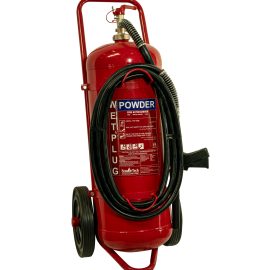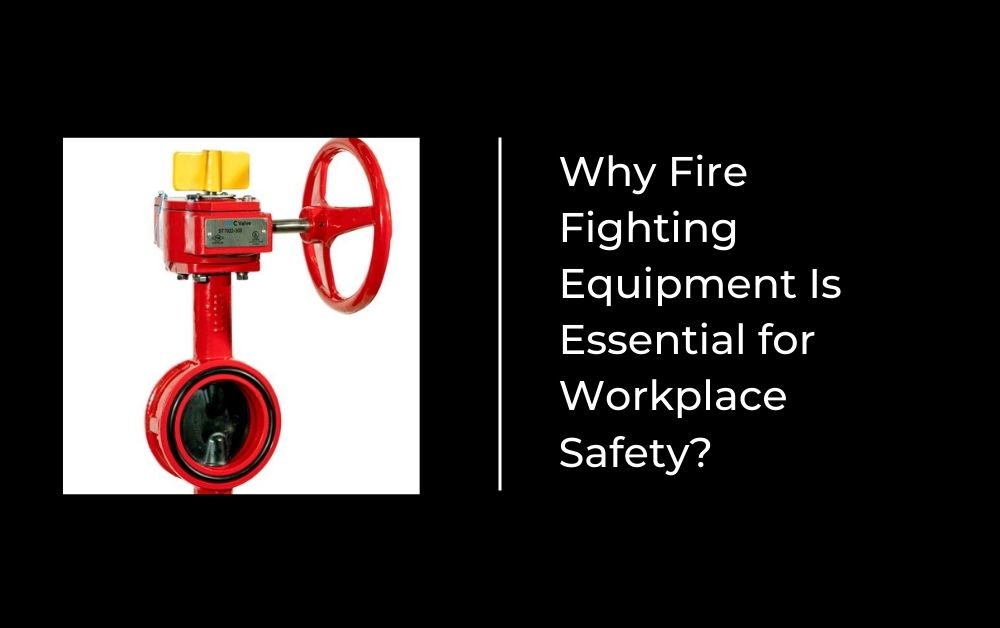Workplace safety is a top priority for businesses, and having the right fire fighting equipment is a crucial part of maintaining a safe environment. Fires can cause devastating damage, endanger lives, and disrupt business operations. Understanding the importance of fire fighting equipment and ensuring its proper use can prevent these disasters. In this blog, we will explore why fire fighting equipment is essential for workplace safety, the types of equipment available, and how to maintain and use them effectively.
Importance of Fire Fighting Equipment in the Workplace
Protecting Lives
The foremost reason for having fire fighting equipment in the workplace is to protect the lives of employees and visitors. In the event of a fire, quick access to fire fighting tools can prevent injuries and save lives.
Immediate Response to Fires
Fire fighting equipment allows for immediate response to a fire, often before the fire department arrives. This quick action can control the fire and stop it from spreading, giving people more time to evacuate safely.
Note:- If you looking for fire fighting equipment in UAE ? Get in touch with Sensor Tech right now! As your go-to source, we provide an extensive selection of fire safety items that are made to the strictest efficiency and safety requirements. Make sure the greatest fire safety technology is installed on your home by contacting Sensor Tech right away for knowledgeable guidance and first-rate assistance.
Reducing Panic
Knowing that fire fighting equipment is available and employees are trained to use it can reduce panic during an emergency. Calm and organized responses are more effective in ensuring everyone’s safety.
Protecting Property
Fires can cause significant damage to property, leading to costly repairs and replacements. Effective fire fighting equipment can minimize property damage by containing and extinguishing fires quickly.
Preventing Fire Spread
Properly used fire fighting equipment can prevent the fire from spreading to other parts of the building, reducing overall damage and the potential for loss.
Minimizing Downtime
A fire can halt business operations, leading to financial losses. By controlling fires swiftly, fire fighting equipment helps minimize downtime and get the business back to normal operations faster.
Types of Fire Fighting Equipment
Fire Extinguishers
Fire extinguishers are the most common type of fire fighting equipment found in workplaces. They are designed to tackle small fires and come in various types based on the kind of fire they can extinguish.
Types of Fire Extinguishers
- Class A Extinguishers: For fires involving ordinary combustibles like wood, paper, and cloth.
- Class B Extinguishers: For fires involving flammable liquids such as gasoline, oil, and grease.
- Class C Extinguishers: For fires involving electrical equipment.
- Class D Extinguishers: For fires involving flammable metals.
- Class K Extinguishers: For fires involving cooking oils and fats, commonly used in commercial kitchens.
Fire Hoses and Nozzles
Fire hoses are used to deliver water to a fire, making them essential for tackling larger fires. Nozzles control the flow and direction of the water, enhancing the effectiveness of fire fighting efforts.
Types of Fire Hoses
- Attack Hoses: Used for fighting fires directly.
- Supply Hoses: Used to transport water from a source to the attack hoses.
Nozzle Varieties
- Adjustable Nozzles: Allow control over the spray pattern and water flow.
- Fixed Nozzles: Provide a constant spray pattern and flow rate.
Fire Sprinkler Systems
Fire sprinkler systems are automated systems installed in buildings to provide an immediate response to fires. They activate when heat from a fire causes the sprinkler heads to release water, controlling or extinguishing the fire.
Benefits of Fire Sprinkler Systems
- Automatic Activation: Sprinklers activate automatically, providing immediate fire suppression.
- Wide Coverage: Sprinklers can cover large areas, protecting entire buildings.
- 24/7 Protection: Sprinkler systems work around the clock, ensuring protection even when the building is unoccupied.
Fire Alarms and Detection Systems
Fire alarms and detection systems are crucial for alerting occupants to a fire. Early detection and warning allow people to evacuate safely and quickly.
Types of Fire Alarms
- Smoke Alarms: Detect smoke and trigger an alarm.
- Heat Alarms: Detect significant temperature increases and trigger an alarm.
- Multi-Sensor Alarms: Combine smoke and heat detection for more accurate fire detection.
Fire Blankets
Fire blankets are used to smother small fires or wrap around a person whose clothes have caught fire. They are effective for putting out flames quickly and safely.
How to Use Fire Blankets
- Pull: Pull the blanket out of its container.
- Cover: Cover the fire completely to cut off the oxygen supply.
- Leave: Leave the blanket in place until the fire is fully extinguished.
Maintenance and Inspection of Fire Fighting Equipment
Regular Inspections
Regular inspections are necessary to ensure that all fire fighting equipment is in working order. Inspections should check for signs of damage, proper placement, and accessibility.
What to Look for During Inspections
- Fire Extinguishers: Check pressure gauges, hoses, and nozzles. Ensure they are fully charged and accessible.
- Fire Hoses and Nozzles: Inspect for leaks, kinks, and wear. Ensure nozzles function correctly.
- Sprinkler Systems: Check for leaks, corrosion, and obstructions. Test the alarm and control systems.
- Fire Alarms: Test the alarm sound and detection sensors. Replace batteries regularly.
- Fire Blankets: Ensure they are clean, undamaged, and stored in accessible locations.
Professional Maintenance
In addition to regular inspections, professional maintenance by certified technicians ensures that fire fighting equipment meets all safety standards and regulations.
Benefits of Professional Maintenance
- Expert Knowledge: Technicians have the expertise to identify and fix issues that may not be apparent during regular inspections.
- Compliance: Ensures that all equipment complies with local fire safety regulations.
- Peace of Mind: Knowing that equipment is professionally maintained provides confidence in its reliability.
Training Employees to Use Fire Fighting Equipment

Importance of Training
Training employees to use fire fighting equipment is crucial for effective emergency response. Well-trained employees can act quickly and confidently during a fire.
Key Training Elements
- Equipment Familiarity: Employees should know the location and operation of all fire fighting equipment.
- Practical Use: Hands-on training sessions where employees practice using fire extinguishers, fire hoses, and fire blankets.
- Emergency Procedures: Clear instructions on evacuation routes, assembly points, and communication protocols.
Conducting Regular Drills
Regular fire drills reinforce training, ensuring that employees remain prepared and confident in their ability to respond to a fire.
Benefits of Fire Drills
- Reinforcement: Regular practice helps retain knowledge and skills.
- Coordination: Drills improve coordination among employees, making emergency responses more efficient.
- Evaluation: Drills provide an opportunity to evaluate and improve emergency procedures.
Conclusion
Fire fighting equipments is essential for maintaining workplace safety. It protects lives, minimizes property damage, and ensures business continuity. By understanding the importance of different types of fire fighting equipments, maintaining them properly, and training employees effectively, businesses can create a safer work environment. Regular inspections, professional maintenance, and frequent training drills are key components of a comprehensive fire safety strategy. Prioritizing these measures not only enhances safety but also provides peace of mind for everyone in the workplace.
Note:- To read more articles visit on netblogz.
